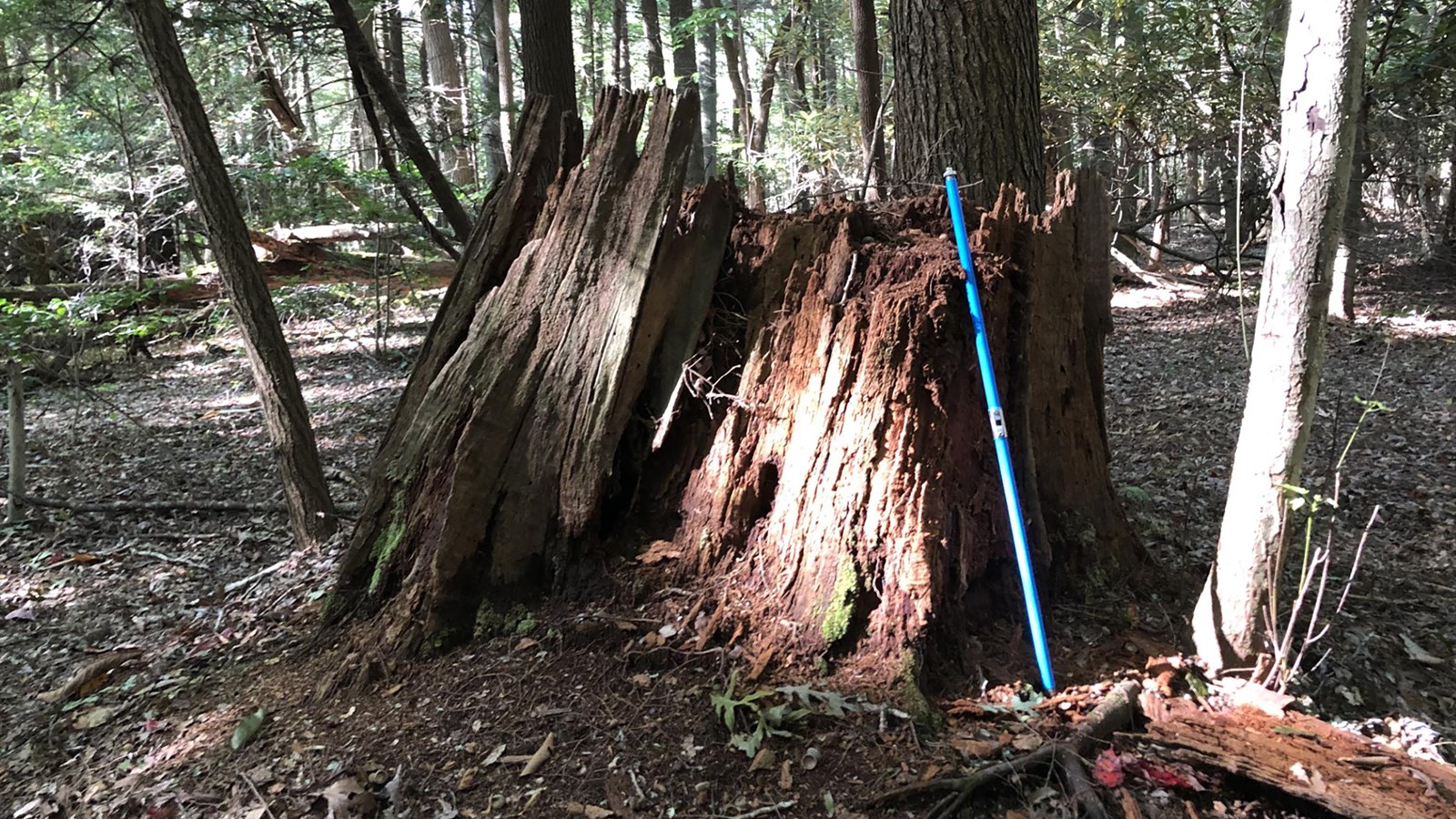Last updated: July 16, 2025
Place
Burnwood Trail Stop 9: Old-Growth Complexity

Thomas Saladyga
Old-Growth Forest Hike Stop 9 - Old-Growth Complexity
This large oak tree fell and took out a few other trees with it during a snowstorm in January 2024. Infrequent disturbance events like storms and low-intensity wildfires that knock over and kill a small percentage of trees within the forest are an important ecosystem process. These fallen trees are not necessarily a bad thing, disturbances like this are part of the processes that add complexity to an old-growth forest.
When this tree fell the root ball came with it, creating a large pit in the ground. Pit and mound topography is a defining characteristic of old-growth forests and these features can last on the landscape for centuries. The pit will eventually fill up from the dirt that erodes off the root ball, creating an obvious mound. Look to your left off trail and you will see an old mound from a tree that probably fell decades ago.
Now that the snowstorm blew over these trees, more coarse woody debris is on the forest floor that will slowly decompose, recycling nutrients and creating new wildlife habitat. A beam of light now shines through the opening in the canopy, allowing for young tree seedlings to grow. Old-growth forests are always in a constant state of change but are self-renewing, where the end of one organism means new beginnings for others.
